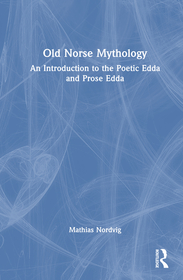
Chivalry, Reading, and Women's Culture in Early Modern Spain
From Amadís de Gaula to Don Quixote
Sorozatcím: Gendering the Late Medieval and Early Modern World;
-
10% KEDVEZMÉNY?
- A kedvezmény csak az 'Értesítés a kedvenc témákról' hírlevelünk címzettjeinek rendeléseire érvényes.
- Kiadói listaár GBP 42.99
-
20 538 Ft (19 560 Ft + 5% áfa)
Az ár azért becsült, mert a rendelés pillanatában nem lehet pontosan tudni, hogy a beérkezéskor milyen lesz a forint árfolyama az adott termék eredeti devizájához képest. Ha a forint romlana, kissé többet, ha javulna, kissé kevesebbet kell majd fizetnie.
- Kedvezmény(ek) 10% (cc. 2 054 Ft off)
- Kedvezményes ár 18 484 Ft (17 604 Ft + 5% áfa)
Iratkozzon fel most és részesüljön kedvezőbb árainkból!
Feliratkozom
20 538 Ft

Beszerezhetőség
Még nem jelent meg, de rendelhető. A megjelenéstől számított néhány héten belül megérkezik.
Why don't you give exact delivery time?
A beszerzés időigényét az eddigi tapasztalatokra alapozva adjuk meg. Azért becsült, mert a terméket külföldről hozzuk be, így a kiadó kiszolgálásának pillanatnyi gyorsaságától is függ. A megadottnál gyorsabb és lassabb szállítás is elképzelhető, de mindent megteszünk, hogy Ön a lehető leghamarabb jusson hozzá a termékhez.
A termék adatai:
- Kiadás sorszáma 1
- Kiadó Routledge
- Megjelenés dátuma 2025. december 1.
- ISBN 9781041176909
- Kötéstípus Puhakötés
- Terjedelem214 oldal
- Méret 234x156 mm
- Nyelv angol 700
Kategóriák
Rövid leírás:
This book analyses many versions of the romance from Spain, Portugal, France, Italy, and England and tells a new story of the life, death, and influences of Amadís.
TöbbHosszú leírás:
The Iberian chivalric romance has long been thought of as an archaic, masculine genre and its popularity as an aberration in European literary history. Chivalry, Reading, and Women's Culture in Early Modern Spain contests this view, arguing that the surprisingly egalitarian gender politics of Spain's most famous romance of chivalry has guaranteed it a long afterlife. Amadís de Gaula had a notorious appeal for female audiences, and the early modern authors who borrowed from it varied in their reactions to its large cast of literate female characters. Don Quixote and other works that situate women as readers carry the influence of Amadís forward into the modern novel. When early modern authors read chivalric romance, they also read gender, harnessing the female characters of the source text to a variety of political and aesthetic purposes. This book analyses many versions of the romance from Spain, Portugal, France, Italy, and England and tells a new story of the life, death, and influences of Amadís.
Triplette's focused critique of women's literacy, both of the medieval texts' fictional characters and of women themselves as their readers, not only serves as a means of investigating gender equality and as a corrective to our increasingly partial reading practices, but also proposes a vitally effective method of approaching women's culture.- Anne J. Cruz, Early Modern Women, Fall 2020,
Chivalry, Reading, and Women's Culture in Early Modern Spain succeeds not only in examining the female characters in 'Amad's' and 'Don Quijote' but also in cogently and brilliantly bringing Beatriz Bernal and her Cristalián de Espa&&&241;a to the fore in Spanish Golden Age studies.- J. A. Garrido Ardila, Renaissance Quarterly, Volume LXXIII, No. 1
Tartalomjegyzék:
Introduction Chapter 1: Women’s Lives and Women’s Literacy in Amadís de Gaula Chapter 2: Women’s Literacy in Beatriz Bernal’s Cristalián de España Chapter 3: The Triumph of Women Readers of Chivalry in Don Quixote Part I Chapter 4: The Defeat of Women Readers of Chivalry in Don Quixote Part II Conclusion, Bibliograph, Notes.
Több

Marie-Antoinette’s Legacy: The Politics of French Garden Patronage and Picturesque Design, 1775-1867






